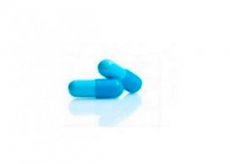Medical expert of the article
New publications
Preparations
Verisyn
Last reviewed: 03.07.2025

All iLive content is medically reviewed or fact checked to ensure as much factual accuracy as possible.
We have strict sourcing guidelines and only link to reputable media sites, academic research institutions and, whenever possible, medically peer reviewed studies. Note that the numbers in parentheses ([1], [2], etc.) are clickable links to these studies.
If you feel that any of our content is inaccurate, out-of-date, or otherwise questionable, please select it and press Ctrl + Enter.

Verisin is used for dizziness (disorders of a vestibular nature).
Indications Verisina
It is used in people with Meniere's disease, and also for the treatment or prevention of dizziness associated with vestibular activity and having various origins.
Syndromes characterized by pain or noise in the ears, severe headaches and pronounced dizziness, vomiting with nausea and progressive hearing loss.
Release form
The medicinal substance is produced in tablets, in the amount of 10 pieces inside a blister pack. The box contains 3 packages with tablets of 8, 16 and 24 mg.
Pharmacodynamics
Betahistine hydrochloride mainly affects the H1 and H3 endings of histamine in the inner ear, as well as the vestibular nuclei in the CNS. The direct agonistic effect on vascular H1 endings, as well as the indirect effect on H3 endings, help improve microcirculation processes - relaxing tense pericapillary sphincters, as well as stabilizing the level of endolymphatic pressure inside the turbinate with the labyrinth. In addition to the above, betahistine increases the volume of blood circulation inside the basilar arteries.
The drug has a powerful central effect, due to which it can slow down the activity of H3-endings inside the vestibular neuronal nuclei. Stabilizes the conduction processes inside these nuclei in the brainstem area.
The clinical symptom of the above-described effect is a decrease in the intensity and frequency of dizziness, a reduction in tinnitus, and an improvement in hearing when it deteriorates.
Pharmacokinetics
The absorption of the active element occurs at high speed; synthesis with plasma protein is weak.
The half-life is about 3-4 hours. The drug is almost completely excreted through the kidneys in the form of a metabolic product (2-pyridylacetic acid) over a period of 24 hours.
Dosing and administration
The medicine should be taken with or after food. Tablets should not be chewed.
Often, 24 mg of the substance per day is taken at first. Later, this dose is reduced to 8-16 mg per day (as a maintenance agent, taking into account the patient's response to therapy). It is necessary to take into account that no more than 32 mg of the drug is allowed per day.
Signs of improvement are often noted from the very beginning of the treatment cycle, and a stable medicinal effect develops after 14 days of drug use and can then be strengthened over several months of the treatment course. The therapy has a long duration (its specific framework is determined individually for each patient).
Use Verisina during pregnancy
It is prohibited to use during lactation or pregnancy, because there is insufficient information to assess the medicinal activity and safety of the drug for this group of patients.
Contraindications
Main contraindications:
- pheochromocytoma;
- ulcerative lesions in the gastrointestinal tract;
- the presence of intolerance to medicinal elements.
Side effects Verisina
Sometimes patients experience vomiting, tremors, nausea, a feeling of severe fatigue, headaches, rashes and paresthesia.
 [ 1 ]
[ 1 ]
Overdose
The histamine contained in the drug can cause dizziness, tachycardia, headaches, hyperemia in the face and upper body, as well as angioedema, bronchial spasms and decreased blood pressure.
The patient needs to be administered cortisone with epinephrine, and in addition, antihistamines with a rapid type of action. If stable hemodynamics are observed, gastric lavage and activated carbon with medications that accelerate the elimination process are performed.
Interactions with other drugs
Antihistamines are betahistine antagonists; therefore, their use should be discontinued before starting to use Verisin.
In case of their combination, the risk of mutual deterioration of their effectiveness is taken into account, and in addition, the fact that antihistamines can cause a sedative effect, as well as sleep disorders and a feeling of anxiety (in case of their rapid cancellation). Therefore, they must be canceled gradually - over 6 days. If rapid cancellation still occurs, it is necessary to additionally prescribe the use of a sedative medication for several days.
Storage conditions
Verisin must be stored at temperatures not exceeding 25°C.
Shelf life
Verisin can be used for a period of 24 months from the date of production of the pharmaceutical product.
Application for children
The use of Verisin in pediatrics (before the age of 12) is prohibited.
Analogues
Analogues of the substance are the medications Betadrine, Duellin, Setegis, Naloxone-M, Ferretab, Alex plus with Talliton, and in addition Relcer, Albarel, Tizercin and Serdol with Erolin. Also on the list are Vepesid, Gepabene, Grandaxin, NovoSeven with Cardilopine, Vermox with Roxihexal and Trimetazid with Infucol GEC.
Attention!
To simplify the perception of information, this instruction for use of the drug "Verisyn" translated and presented in a special form on the basis of the official instructions for medical use of the drug. Before use read the annotation that came directly to medicines.
Description provided for informational purposes and is not a guide to self-healing. The need for this drug, the purpose of the treatment regimen, methods and dose of the drug is determined solely by the attending physician. Self-medication is dangerous for your health.

